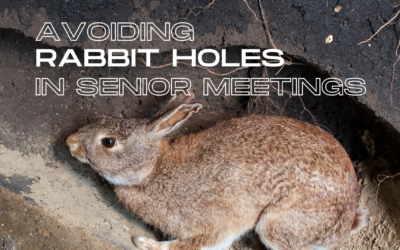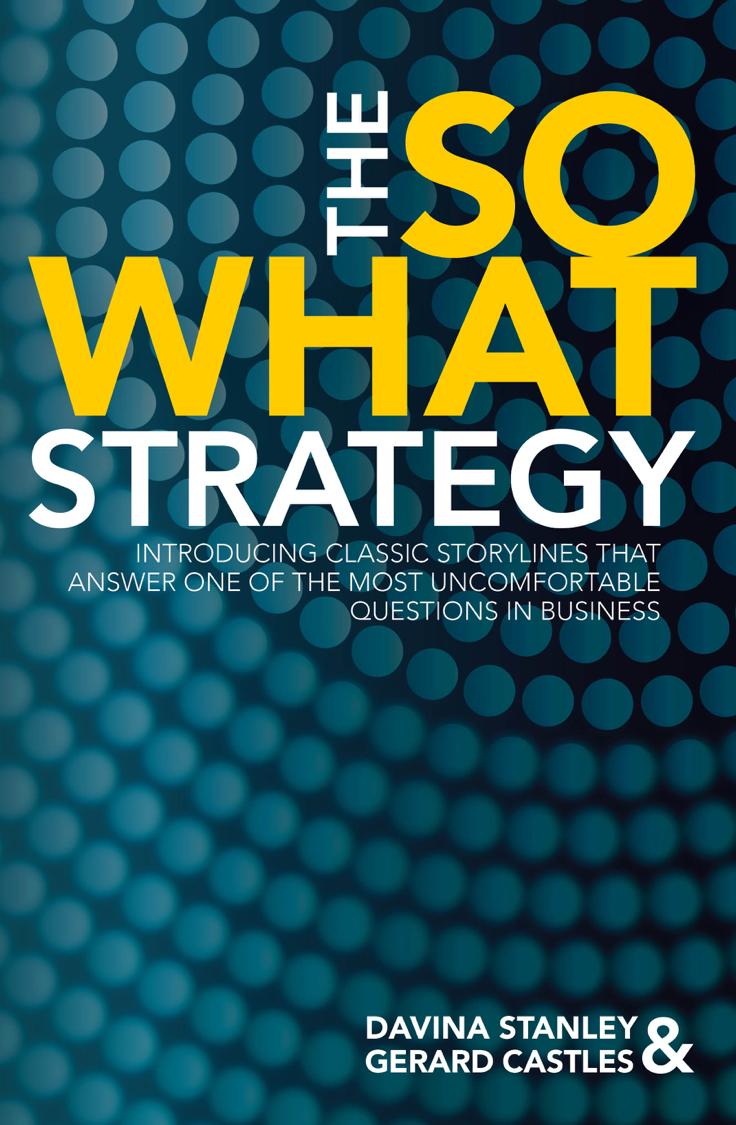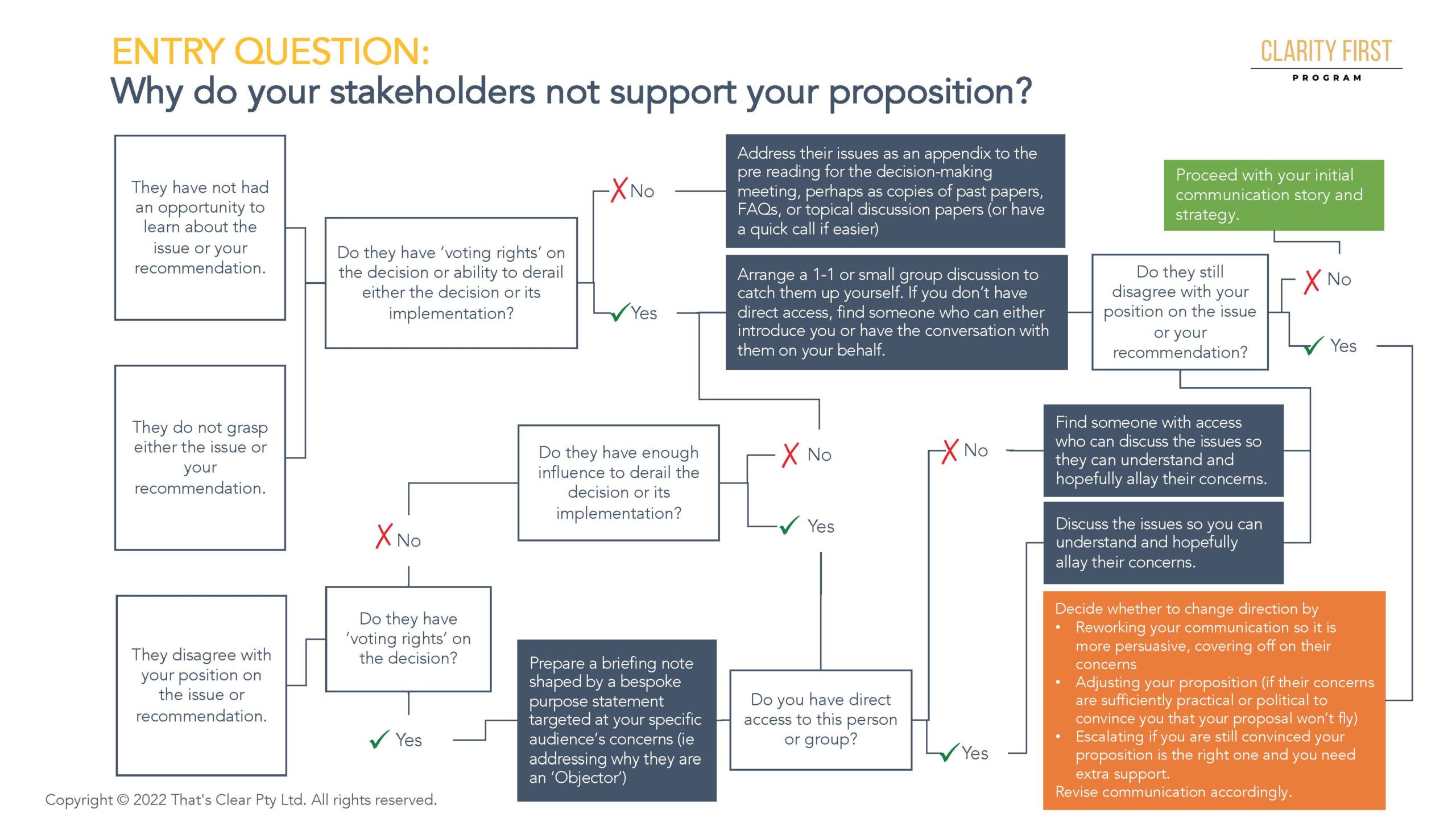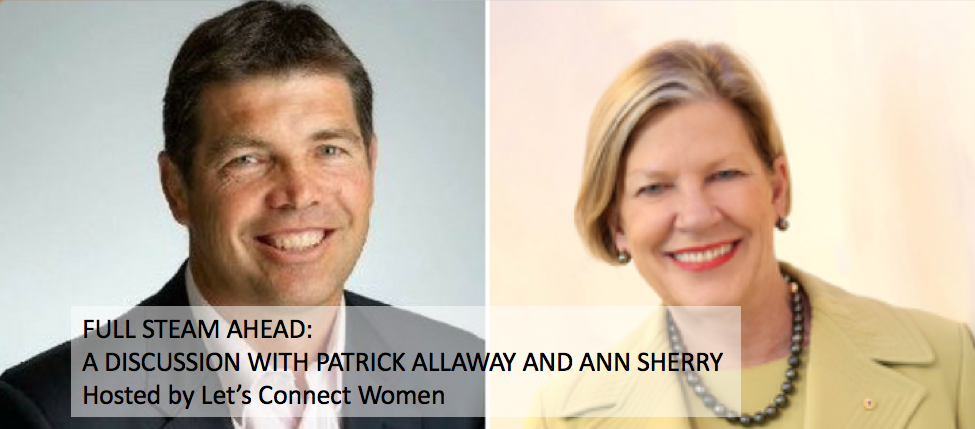How often do you outline your desired outcome as...

How to cut meetings by communicating better
How often has your communication led to a meeting cancellation … for the right reasons?
When I say the right reasons, I mean because your email or paper was so good the leadership got your message and didn’t need to discuss it.
Charl-Stephan experienced this recently.
He wrote a paper explaining the reasons for underperformance of a division within his company.
The CEO called him the next day to thank him and said:
“Thanks for that. We don’t need to meet. Your email and paper were so clear we can see what has gone wrong and what we need to do.”
Watch below to learn how he did it.
I hope that helps. More soon.
Davina
PS – Charl-Stephan learned how to do this during the last Clarity First Intensive. Click here to learn more about it, here to download the brochure and here for a draft note seeking funding support.
RELATED POSTS
When NOT to seek strategy approval
A trap to avoid when engaging senior leaders
When we talk about deeply understanding our...
What to recommend to senior leaders and Boards?
Do you wonder what to write those boxes in the...
Do you really need to INFORM your audience?
I write this to you having just wrapped up a...
How to know if your communication is quality
Do you ever wonder if your papers and...
Who to collaborate with on important paper?
When people learn to prepare papers and...

PRESENTED BY DAVINA STANLEY
I love what I do.
I help senior leaders and their teams prepare high-quality papers and presentations in a fraction of the time.
This involves 'nailing' the message that will quickly engage decision makers in the required outcome.
I leverage 25+ years' experience including
- learning structured thinking techniques at McKinsey in Hong Kong in the mid 1990s before coaching and training their teams globally as a freelancer for a further 15 years
- being approved to teach the Pyramid Principle by Barbara Minto in 2009
- helping CEOs, C-suite leaders and their reports deeply understand their stakeholder needs and communicate accordingly
- seeing leaders cut the number of times they review major papers by ~30% and teams cut the amount of time they take to prepare major papers by ~20%*
- watching senior meetings focus on substantive discussions and better decisions rather than trying to clarify the issue
My approach helps anyone who needs to engage senior leaders and Boards.
Recent clients include 7Eleven, KPMG, Mercer, Meta, Woolworths.
Learn more at www.clarityfirstprogram.com
(*) Numbers are based on 2023 client benchmarking results.
































